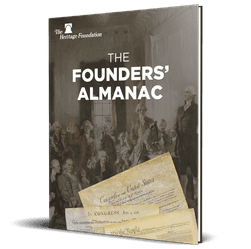In September 2021, the leaders of Australia, the United Kingdom, and the United States announced a plan to cooperate on their respective nuclear attack submarine programs and technological advancement. The result: AUKUS, a trilateral partnership that promotes security in the Indo-Pacific region.
AUKUS is divided into two pillars. In Pillar I, the three nations share nuclear-propulsion technology, hull design, port and berthing rights, and officers on certain submarine patrols. Eventually, the program will include the selling of U.S.-made Virginia-class submarines and will, by the 2030s and 2040s, lead to the production of AUKUS-class submarines in the United Kingdom and Australia.
Pillar 2, as then Assistant Secretary of Defense Madeline Mortelmans described it, “focuses on the development and delivery of emerging technology….[and] is designed to harness the combined industrial and innovation bases of the trilateral partners to ensure that our forces are equipped with cutting edge interoperable military capabilities and prepared to face down aggression in whatever form it may take.”
Put another way, while Pillar 1 is very much focused on one important but relatively small component of military power—attack submarines—Pillar 2 lays the groundwork for almost great amount of industrial and technical cooperation that goes well beyond maritime sub-surface operations. Indeed, there are virtually no limits to how Washington and its allies in Canberra and London can collaborate when it comes to defense innovation.
>>> AUKUS Is a Good First Step, But It Needs to Go Further
This is welcome news, given the advances of America’s adversaries. From China’s continued focus on quantity and quality of forces, to Russia’s emphasis on large quantities of missiles and land attack capabilities, to North Korea’s ever-maturing missile arsenal, to Iran’s pursuit of the Bomb, the Axis of the Autocracies is striving to overcome U.S. and U.S. allied technological superiority. The type of collaboration laid out in AUKUS could enable the United States and its allies to stay ahead of their adversaries in the quest to secure military advantage.
But what else could AUKUS do in support of these efforts?
One simple but important step would be to establish a place where AUKUS members could gather and experiment in real time with the innovations they develop.
Such a place could be called the “AUKUS Center for Experimentation”—or ACE.
ACE could be a proving ground for various experimental capabilities conducted through the AUKUS agreement. Its mission would be to rapidly experiment on the concepts, capabilities, and hardware that Australian, British, and American defense innovators identify as part of AUKUS Pillar 2 in order to get new systems into the field quickly.
A functional “ACE” would enable experimentation on land with various types of vehicles or unmanned systems; in the air, with aircraft, drones, lasers, or other types aerial platforms; and in the maritime domain, with manned or unmanned surface or subsurface vessels. ACE could be a place to test new types of directed energy weapons, drones, or unmanned underwater vessels or munitions and have the ability to move fast, fail quick, break things, and innovate. It could be a center with near real time improvements and off the cuff, unscheduled experiments, away from the prying eyes of elected officials, senior military officers, or civilian bureaucrats.
In addition to serving as an experimentation center for U.S., British, and Australian defense ministries, ACE could also serve as a platform for other like-minded nations who wanted to work more closely with the AUKUS group—such as Japan or India—and use the center to experiment with their own capabilities in conjunction with AUKUS.
>>> The Army’s Newest Units Are Needed in the Indo-Pacific
Such a center of experimentation would have several requirements. First, it would need significant amounts of unoccupied space—perhaps upwards of 1,000 square miles—that could facilitate a wide variety of experiments in relative privacy. Second, it would need to be adjacent to the ocean, in order to facilitate large amounts of maritime experimentation, both above and below the surface of the ocean. Third, it would need to be run with an entrepreneurial, non-bureaucratic spirit, so as to rapidly experiment-fail-and improve. A Marine colonel would be the right type of person to command such a facility.
Where might such a center be located? Northwestern Australia has significant—almost endless—amounts of space and privacy. It’s also close enough to Perth to facilitate flights from allied capitals, but far enough away from prying eyes so that the personnel at ACE could operate rapidly without onerous oversight or too frequent interruptions by leadership. In short, the only way to get to Northwestern Australia, is if one has a burning desire—and the time—to get there.
Standing up ACE or an ACE-like entity may be a relatively low cost way to galvanize combined experimentation and help get new capabilities out to the hands of our warfighters, rapidly.
Washington, Canberra, and London should consider it.
This piece originally appeared in RealClear Defense





